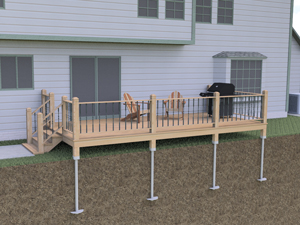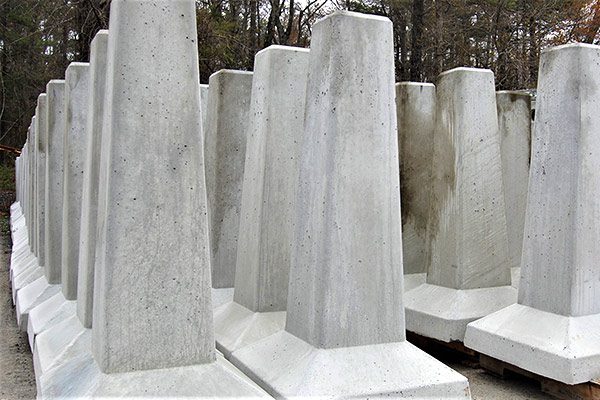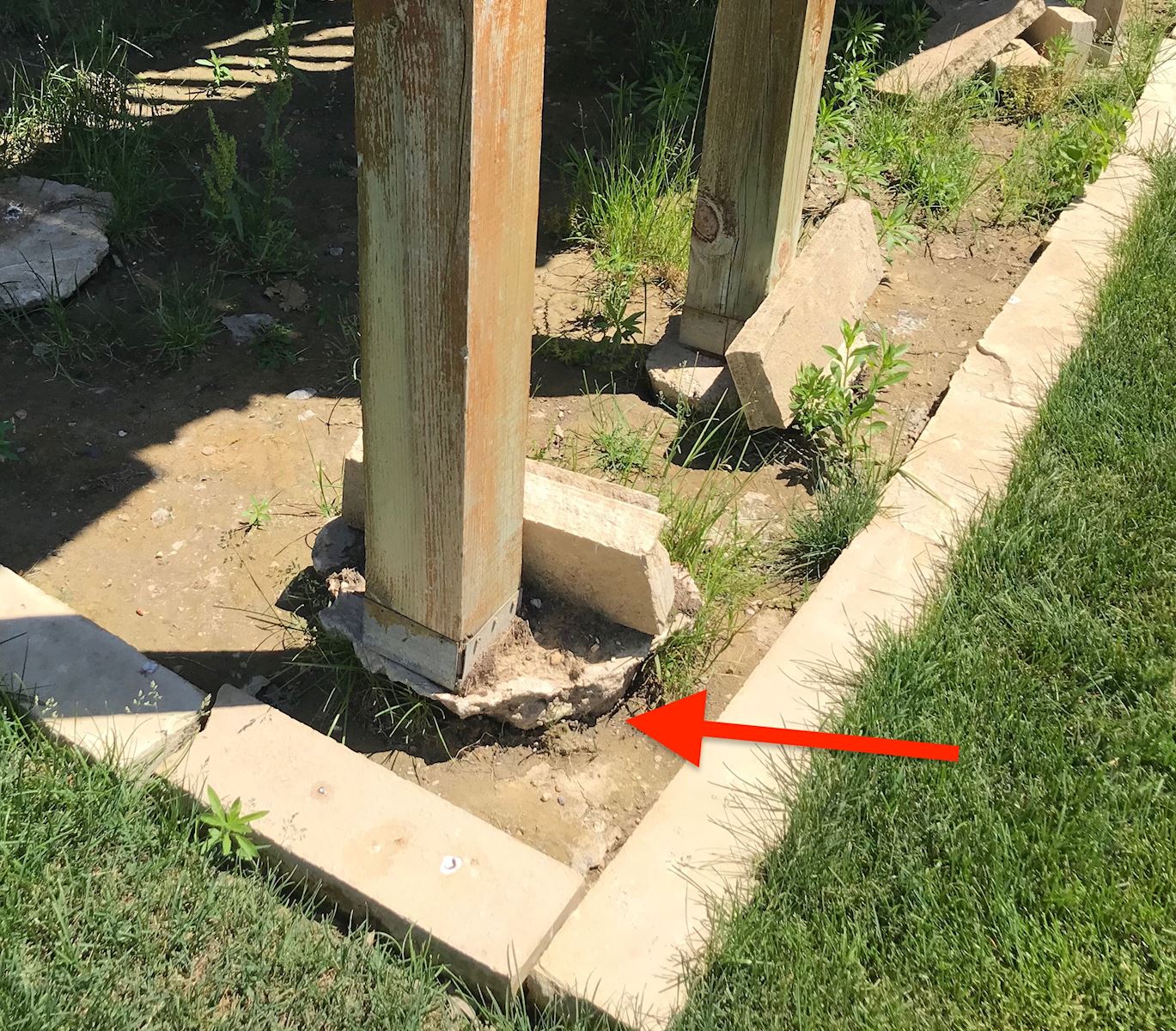Protect Structures, Enduring Perceptions: Mastering the Art of Deck Footings Installment
Protect Structures, Enduring Perceptions: Mastering the Art of Deck Footings Installment
Blog Article
Specialist Tips for Setting Up Deck Footings to Support Your Outdoor Area
When it comes to constructing a deck, one of the most critical aspects to consider is the installation of proper grounds. These footings are the structure upon which your outside area will certainly rest, giving stability and support for years to come. What precisely does it take to set up deck footings correctly?
Importance of Correct Deck Footings
Proper deck grounds are important for guaranteeing the stability and long life of your outside space. When building a deck, it is essential to take note of the structure on which it will rest. Deck grounds provide the essential support for the whole structure and aid disperse the weight equally - Deck Footings. Without strong and properly set up grounds, your deck may end up being unstable, causing safety and security dangers and expensive repairs.

In enhancement to security, proper deck footings additionally contribute to the durability of your outdoor area (Deck Footings). Grounds that are made and constructed to withstand the components and dirt conditions in your location will aid protect against the deck from clearing up or changing over time. By making certain the grounds are appropriately sized and mounted, you can minimize the danger of damages to the deck framework, extending its lifespan and decreasing the need for pricey repair work or replacements

Choosing the Right Type of Grounds
When choosing the appropriate sort of grounds for your deck, it is vital to take into consideration factors such as soil problems, regional building regulations, and the overall layout of your exterior area. The kind of footing you pick will play a vital duty in ensuring the security and long life of your deck.
One usual kind of footing is the concrete ground. Concrete footings are appropriate for a lot of dirt conditions and offer exceptional assistance for decks. They are usually set up listed below the frost line to avoid shifting and settling because of cold and thawing cycles. Another option is helical piers, which are ideal for areas with unstable dirt or high water tables. These piers are screwed right into the ground and give strong support for the deck.
Sometimes, you might need to utilize customized footings, such as stack grounds or deep structures, if you are constructing a big or multi-level deck. These footings are made to disperse the weight of the deck over a larger area, making sure stability and stopping sinking or settling.
Before picking a sort of footing, it is vital to get in touch with neighborhood building ordinance and laws to make sure conformity. In addition, take into consideration the layout and intended use your exterior area. Factors such as the size, form, and load-bearing needs of your deck will certainly affect the kind of footing that is most ideal.
Preparing the Ground for Footing Installation
To correctly prepare the ground for footing installment, it is essential to analyze the soil problems and take needed actions to guarantee security and sturdiness of the deck. The first action is to excavate the area where the grounds will certainly be set up.
As soon as the location has been dug deep into, the following action is to portable the soil. This can be done utilizing a plate compactor or by utilizing a hand tamper. Compacting the dirt assists to remove any kind of voids or air pockets, which can cause clearing up and instability with time.
After compacting the soil, it is necessary to lay a layer of gravel or crushed stone at the base of the excavation. This will supply drainage and assistance to stop water from pooling around the footings, which can result in erosion and instability.
Step-by-Step Guide to Setting Up Deck Footings
After effectively preparing the ground for footing installation, the next action is to begin the process of installing deck footings. This step-by-step guide will provide you with a clear understanding of how to install deck grounds for your outside space.
Identify the place: Begin by noting the placements of the deck grounds making use of risks and string. Make certain that the locations align with the design and layout of your deck.
Dig the openings: Make use of a message opening miner or an auger to dig the holes for the footings. The depth and size of the holes should be in conformity with neighborhood building ordinance and the specific requirements of your deck layout.
Degree the openings: Utilize a level to guarantee that the holes are dug to the correct deepness and are level with each other. (Deck Footings)
Add crushed rock: Location a look what i found layer of gravel at the bottom of each opening to boost drain and stop the wood from decomposing.
Insert the footings: Position the grounds right into the holes, ensuring they visit are level and plumb. Make use of a degree and a determining tape to guarantee accuracy.
Safeguard the grounds: Pour concrete right into the openings around the grounds, loading them to the top. Utilize a message degree to make sure the grounds remain degree as the concrete sets.
Allow time for healing: Let the concrete cure according to the producer's instructions prior to proceeding with the deck building and construction.
Usual Blunders to Stay Clear Of During Footing Installment
One vital facet to consider throughout the setup of deck footings is staying clear of typical blunders that can jeopardize the security and durability of your exterior space. While deck grounds may feel like a simple and straightforward component of the building process, ignoring particular elements can bring about costly fixings and possible security threats down the line.

Additionally, overlooking to install correct drainage steps can trigger water to collect around the grounds, causing rot, degeneration, and the ultimate weakening of the deck's structure. Moreover, utilizing the incorrect kind of footing material or stopping working to adequately safeguard the footings can compromise their architectural honesty.
To prevent these errors, it is essential to seek advice from a specialist or adhere to sector standards to ensure appropriate ground setup. By doing so, you can guarantee the stability and durability of your exterior room, supplying a risk-free and satisfying environment for years to come.
Final Thought
To conclude, installing correct deck helpful hints grounds is vital for the security and durability of your outdoor room. By selecting the right type of footings and properly preparing the ground, you can make sure a solid foundation for your deck. Following a step-by-step overview and preventing typical errors throughout footing installation will certainly further enhance the sturdiness and safety and security of your deck.
Proper deck grounds are crucial for making certain the security and durability of your outside space. The footings offer as a link in between the deck and the ground, allowing the weight of the deck and its residents to be distributed equally into the soil.One usual kind of ground is the concrete footing. Place the footings: Place the grounds into the openings, making sure they are level and plumb. Safeguard the footings: Pour concrete into the holes around the grounds, loading them to the top.
Report this page